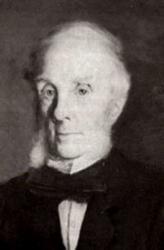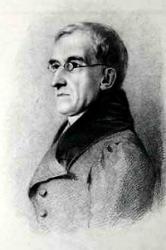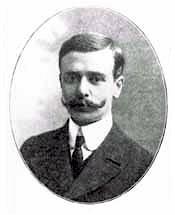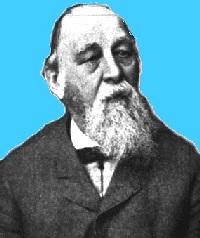Planning worship?
Check out our sister site, ZeteoSearch.org,
for 20+ additional resources related to your search.
- |
User Links
Person Results
Hubert P. Main

1839 - 1925 Composer of "EXULTATION" in College Hymnal Hubert Platt Main DD USA 1839-1925. Born at Ridgefield, CT, he attended singing school as a teenager. In 1854 he went to New York City and worked as an errand boy in a wallpaper house. The next year he became an errand boy in the Bristow & Morse Piano Company. He was an organist, choir leader, and compiled books of music. He also helped his father edit the “Lute Songbook” by Isaac Woodbury. In 1866 he married Olphelia Louise Degraff, and they had two sons: Lucius, and Hubert. In 1867 he filled a position at William B Bradbury’s publishing house. After Bradbury’s death in 1868 the Bigelow & Main Publishers were formed as its successor. He also worked with his father until his father’s death in 1873. Contributors to their efforts were Fanny Crosby, Ira Sankey, Wilbur Crafts, and others. In addition to publishing, Main wrote 1000+ pieces of music, including part song, singing school songs, Sunday school music, hymns, anthems, etc. He also arranged music and collected music books. He 1891 he sold his collection of over 3500 volumes to the Newberry Library in Chicago, IL, where they were known as the Main Library. Some of his major publications include: “Book of Praise for the Sunday school” (1875), “Little pilgrim songs” (1884), “Hymns of Praise” (`1884), “Gems of song for the Sunday school” (1901), “Quartettes for men’s voices: Sacred & social selections” (1913). In 1922 Hope Publishing Company acquired Bigelow & Main. He was an editor, author, compiler, and composer, as well as publisher. He died in Newark, NJ.
John Perry
Hubert P. Main
William Gaskell

1805 - 1884 Author of "Though Lowly Here Our Lot May Be" in The New Canadian Hymnal Gaskell, William, M.A., son of Mr. William Gaskell, was born at Latchford (a suburb of Warrington, on the Cheshire side of the Mersey), 24 July, 1805. He was educated at Manchester New College and at the University of Glasgow, where he graduated M.A. in 1825. In 1828 he became co-pastor with the Rev. J. G. Robberds at Cross Street Unitarian Chapel, Manchester, a position he held until his death. Mr. Gaskell was a man of cultivated mind and considerable literary ability. His publications include Lectures on the Lancashire Dialect, 1853, a small volume of Temperance Rhymes, 1839, and various theological works. In 1832 he married Elizabeth Cleghorn Stevenson, who afterwards attained celebrity as the authoress of Mary Barton, and of other popular tales. He died June 11, 1884, and is buried at Knutsford. To the second edition, 1856, of the 1st Series of Lyra Germanica Mr. Gaskell contributed "A sure Stronghold our God is He," a translation of Luther's “ Ein' feste Burg" (q.v.), replacing a version by Miss Winkworth in the first edition. He also contributed 79 hymns to Beard's Unitarian Collection of Hymns for Public and Private Worship, 1837. [George Arthur Crawford, M.A.]
The following hymns by Gaskell still in common use are found chiefly in Unitarian hymnbooks, including Martineau's Hymns, &c, 1840, and Hymns of Praise and Prayer, 1873; Hedge & Huntington's Hymns for the Church of Christ, Boston, U.S.A., 1853; Longfellow & Johnson's Book of Hymns, Boston, 1848, and their Hymns of the Spirit, Boston, 1864; and the American Unitarian Association's Hymn [& Tune] Book, &c, Boston, 1868 :—
1. Dark, dark indeed the grave would be. Death and Burial.
2. Darkness o'er the world was brooding. The Dayspring.
3. Dark were the paths our Master trod. Sympathy with Christ.
4. Father, glory be to Thee. Doxology.
5. Forth went the heralds of the cross. Power of Faith.
6. How long, O Lord, his brother's blood? In time of War. From this "O hush, great God, the sounds of war," is taken.
7. I am free, I am free, I have broken away. The New Birth.
8. In vain we thus recall to mind. Holy Communion.
9. Mighty God, the first, the last. Infinite Knowledge.
10. No more, on earth no more. Death and Heaven.
11. Not in this simple rite alone. Holy Communion.
12. Not on this day, 0 God, alone. Sunday.
13. O God, the darkness roll away. Missions.
14. O God, to Thee our hearts would pay. Old Year.
15. 0 God, who knowest how frail we are. Seeking Strength.
16. 0 not to crush with abject fear. Christ's Work.
17. Our Father, through the coining year. The original begins, "Father, throughout the coming year."
18. Press on, press on, ye sons of light. Continuance in well-doing.
19. Sleep not, soldier of the cross. Faithfulness.
20. Thanks, thanks unto God! Who in mercy hath spoken. Gratitude for the Gospel.
21. Through all this life's eventful road. Walking with God.
22. To Thee, the Lord Almighty. Doxology.
23. Unto Thy temple, God of Love. Divine Worship.
24. We join to [crave] pray with wishes kind. Holy Matrimony.
25. We would leave, 0 God, to Thee. Original: "We would cast, 0 God, on Thee." Rest in God.
26. When arise the thoughts of sin. Looking to Jesus.
These hymns all appeared in Beard's Collection, 1837. In addition there are:—
27. Calmly, calmly lay him down.
28. 0 Father, [gladly] humbly we repose.
29. 0 hush, great God, the sounds of war. For Peace.
The dates of these hymns we have not been able to determine. No. 27 is in Hopps's Hymns for Public Worship, 1858 ; and Nos. 28 and 29 are in Hedge & Huntington's Hymns for the Church of Christ, 1853.
-- John Julian, Dictionary of Hymnology (1907)
William Gaskell
William Horsley

1774 - 1858 Composer of "HORSLEY" in The American Hymnal for Chapel Service Born: November 15, 1774, Mayfair, London, England.
Died: June 12, 1858, Kensington, London, England.
Buried: Kensal Green Cemetery, London, England.
Horsley studied music privately, then became organist of Ely Chapel, Holborn, London, in 1794. He assisted Dr. J. W. Callcott (who encouraged him in persevering at Glee-writing, at which he became successful) as organist of the Asylum for Female Orphans, and married Callcott’s daughter. He succeeded Callcott in 1802, holding that post 52 years. A difference of opinion with the Asylum Committee led to him being dismissed. In 1838 he also became organist of Charterhouse "at a salary of £70 and a room set apart and a fire provided when necessary for his use on those days upon which his duty requires his attendance at the Hospital." He founded the London Philharmonic Society, and in later years was a close friend of Felix Mendelssohn.
J. C. Horsley, the eminent painter, relates in his Reminiscences the following experience when he went with his father to one of the services:
"When I was four years old my father was organist to the Asylum for Female Orphans, which was a stately building on the Westminster Bridge Road; and one Sunday he took me in with him to the morning service and landed me in the organ-loft. Everything was new and surprising to me, especially the crowd of buxom girls, at least a hundred in number, all dressed alike, ranged right and left of the organ, and who, when the organ had played a bar or two of the opening hymn, sang out with open mouths and such energy that I was positively scared, and in continently accompanied the performance with a prolonged howl; upon which my father, continuing to play the accompaniment with one hand, supplied me promptly with paper out of his capacious pocket, where he always kept a store of backs of letters (envelopes were not invented then), and a silver pencil-case of heroic proportions, thus quieting me." Lightwood, pp. 171-72
--www.hymntime.com/tch/
William Horsley
John Bacchus Dykes

1823 - 1876 Person Name: Rev. J. B. Dykes, Mus. Doc. Composer of "ST. AGNES, DURHAM" in The New Canadian Hymnal As a young child John Bacchus Dykes (b. Kingston-upon-Hull' England, 1823; d. Ticehurst, Sussex, England, 1876) took violin and piano lessons. At the age of ten he became the organist of St. John's in Hull, where his grandfather was vicar. After receiving a classics degree from St. Catherine College, Cambridge, England, he was ordained in the Church of England in 1847. In 1849 he became the precentor and choir director at Durham Cathedral, where he introduced reforms in the choir by insisting on consistent attendance, increasing rehearsals, and initiating music festivals. He served the parish of St. Oswald in Durham from 1862 until the year of his death. To the chagrin of his bishop, Dykes favored the high church practices associated with the Oxford Movement (choir robes, incense, and the like). A number of his three hundred hymn tunes are still respected as durable examples of Victorian hymnody. Most of his tunes were first published in Chope's Congregational Hymn and Tune Book (1857) and in early editions of the famous British hymnal, Hymns Ancient and Modern.
Bert Polman
John Bacchus Dykes
Anonymous
Person Name: Unknown Composer of "TOTTENHAM" in The Day School Hymn Book In some hymnals, the editors noted that a hymn's author is unknown to them, and so this artificial "person" entry is used to reflect that fact. Obviously, the hymns attributed to "Author Unknown" "Unknown" or "Anonymous" could have been written by many people over a span of many centuries.
Anonymous
E. J. Hopkins

1818 - 1901 Person Name: Edward J. Hopkins, 1818-1901 Composer of "ST. HUGH" in Hymns for Schools and Colleges Dr Edward John Hopkins MusDoc United Kingdom 1818-1901. Born at Westminster, England, the son of a clarinetist with the Royal Opera House orchestra, he became an organist (as did two of his brothers) and a composer. In 1826 he became a chorister of the Chapel Royal and sang at the coronation of King William IV in Westminster Abbey. He also sang in the choir of St. Paul’s Cathedral, a double schedule requiring skill and dexterity. On Sunday evenings he would play the outgoing voluntary at St. Martin’s in-the-field. He left Chapel Royal in 1834 and started studying organ construction at two organ factories. He took an appointment at Mitcham Church as organist at age 16, winning an audition against other organists. Four years later he became organist at the Church of St. Peter, Islington. In 1841 he became organist at St. Luke’s, Berwick St., Soho. Two Years later he was organist at Temple Church, which had a historic organ (built in 1683). He held this position for 55 years. In 1845 he married Sarah Lovett, and they had four sons and five daughters. He was closely associated with the Bach Society and was organist for the first English performances of Bach’s St. Matthew Passion. In 1855 he collaborated with Edward Rimbault publishing “The organ, its history and construction” (3 editions 1855-70-77). In 1864 he was one of the founders of the “College of organists”. In 1882 he received an honorary Doctorate of Music from the Archbishop of Canterbury. He composed 30+ hymn tunes and some psalm chants, used by the Church of England. He died in London, England.
John Perry
E. J. Hopkins
Is. Smith
1734 - 1805 Person Name: I. Smith, c. 1725-c. 1800 Composer of "ABRIDGE" in The Mennonite Hymnary, published by the Board of Publication of the General Conference of the Mennonite Church of North America Isaac Smith; published "A Collection of Psalm Tunes" about 1770
Evangelical Lutheran Hymnal, 1908
Is. Smith
Josiah Booth
1852 - 1930 Composer of "NORTHREPPS" in Songs of the Christian Life Josiah Booth (27 March 1852 – 29 December 1929) was an English organist and composer, known chiefly for his hymn-tunes.
See also in:
Wikipedia
Josiah Booth
T. Tertius Noble

1867 - 1953 Composer of "MINSTER" in The Sunday School Hymnary Thomas Tertius Nobel (1867-1953) was born in Bath, England, educated at the Royal College of Music, and was a noted composer and organist. He served as a church organist in Cambridge and Colchester. He moved to Ely Cathedral in 1892 as organist and choirmaster, and in 1898 to York Minster, where he founded the York Symphony Orchestra, directed the York Musical Society, conducted the York Pageant, and revived the York Musical Festival after a lapse of 75 years. He became an honorary fellow of the Royal College of Organists in 1905. In 1913, he moved to New York City, where he was organist at St. Thomas’ Episcopal Church, and established its choir school and a boys’ choir. In addition to composing, he wrote about music education, and helped edit the 1916 Protestant Episcopal hymnal, and served on the music committee that prepared its 1940 successor. He wrote a wide range of music, but only his services, anthems and hymn tunes are still performed regularly. Died: May 4, 1953, Rockport, Massachusetts.
http://www.hymntime.com/tch/
T. Tertius Noble
Lord Houghton
Author of "Though lowly here our lot may be" in The American Hymnal for Chapel Service
Lord Houghton
John Richardson
1816 - 1879 Person Name: J. Richardson Arranger of "ST. BERNARD" in The Fellowship Hymn Book
John Richardson
Gaetano Donizetti

1797 - 1848 Person Name: G. Donizetti Composer of "RAPHAEL" in A Hymnal for Joyous Youth Domenico Gaetano Maria Donizetti (born 29 November 1797 – died 8 April 1848) was an Italian composer from Bergamo, Lombardy.
Donizetti came from a non-musical background but, at an early age, he was taken under the wing of composer Simon Mayr who had set up the Lezioni Caritatevoli and had enrolled him by means of a full scholarship. There he received detailed training in the arts of fugue and counterpoint, and it was from there that Mayr was instrumental in obtaining a place for the young man at the Bologna Academy. In Bologna, at the age of 19, he wrote his first one-act opera, the comedy Il Pigmalione, although it does not appear to have been performed during his lifetime.
Through his life, Donizetti wrote about 70 operas, but an offer in 1822 from Domenico Barbaja, the impresario of the Teatro San Carlo in Naples, which followed the composer's ninth opera, led to his move to that city and the composition of 28 operas which were given their premieres at that house or in one of the city's smaller houses including the Teatro Nuovo or the Teatro del Fondo. This continued until the production of Caterina Cornaro in January 1844. In all, Naples presented 51 of Donizetti's operas.
During this period, success came primarily with the comic operas, the serious ones failing to attract significant audiences. However, the situation changed with the appearance in 1830 of the serious opera, Anna Bolena which was the first to make a major impact on the Italian and international opera scene and, at the same time, to shift the balance for the composer away from success with only comedic operas. However, even after 1830, his best-known works did also include comedies such as L'elisir d'amore (1832) and Don Pasquale (1843). But significant historical dramas did appear and became successful, sometimes outside Naples before reaching that city. Most significantly, they included Lucia di Lammermoor (the first to be written by librettist Salvadore Cammarano) in 1835, as well as "one of [his] most successful Neapolitan operas", Roberto Devereux in Up to that point, all of his operas had been written to Italian librettos.
However, moving to Paris in 1838, Donizetti set his operas to French texts; these include La favorite and La fille du régiment and were first performed in that city from 1840 onward. It appears that much of the attraction of moving to Paris was not just for larger fees and prestige, but his chafing against the censorial limitations which existed in Italy, thus giving him a much greater freedom to choose subject matter. By 1845 severe illness caused him to be moved back to Bergamo to die in 1848.
Along with Gioachino Rossini and Vincenzo Bellini, he was a leading composer of bel canto opera during the first fifty years of the Nineteenth Century.
The youngest of three sons, Donizetti was born in 1797 in Bergamo's Borgo Canale quarter located just outside the city walls. His family was very poor and had no tradition of music, his father Andrea, being the caretaker of the town pawnshop. Simone Mayr, a German composer of internationally successful operas had become maestro di cappella at Bergamo's principal church in 1802 and he then founded the Lezioni Caritatevoli school in Bergamo in 1805 for the purpose of providing musical training, including classes in literature, beyond that which choirboys ordinarily received up until the time that their voices broke. In 1807, Andrea Donizetti attempted to enroll both his sons, but the elder, Giuseppe (then 18), was considered too old. Gaetano (then 9) was accepted.
While not especially successful as a choirboy during the first three trial months of 1807, there being some concern about a diffetto di gola (throat defect), in every other regard Mayr was reporting that Gaetano "surpasses all the others in musical progress". Mayr was able to persuade the authorities that the young boy's talents were worthy of keeping him in the school, and he remained there for nine years until 1815.
However, as William Ashbrook notes, in 1809 he was threatened with having to leave because his voice was changing. In 1810 he applied for and was accepted by the local art school, the Academia Carrara, but it is unknown whether he attended classes. Then, in 1811, Mayr once again intervened. Having written both libretto and music for a "pasticcio-farsa", Il piccolo compositore di musica, as the final concert of the academic year, he cast five your students amongst them Donizetti, his young pupil, as "the little composer". As Ashbrook notes this "was nothing less than Mayr's argument that Donizetti be allowed to continue his musical studies".
In Bologna, he justified the faith which Mayr had placed in him and in 1816 he wrote what Allitt describes as "his initial exercises in operatic style", the opera Il pigmalione, as well as composing portions of Olympiade and L'ira d'Achille in 1817, these two being no more than "suggest[ing] the work of a student". Encouraged by Mayr to return to Bergamo in 1817, he began his "quartet years" as well as composing piano pieces and most likely being part of quartets where he would have played and heard music of other composers. In addition, he began seeking employment.
After some minor compositions under the commission of Paolo Zancla, Donizetti wrote his ninth opera, Zoraida di Granata. This work impressed Domenico Barbaia, a prominent theatre manager, and Donizetti was offered a contract to compose in Naples. Writing in Rome and Milan in addition to Naples, Donizetti achieved some popular success in the 1820s (although critics were often unimpressed). It was not until 1830 that he became well known internationally, when his Anna Bolena was premiered in Milan, and this brought him instant fame throughout Europe.
L'elisir d'amore, a comedy produced in 1832, came soon after, and is deemed to be one of the masterpieces of 19th-century opera buffa (as is his Don Pasquale, written for Paris in 1843). Shortly after L'elisir d'amore, Donizetti composed Lucia di Lammermoor, based on The Bride of Lammermoor, the novel by Sir Walter Scott. This became his most famous opera, and one of the high points of the bel canto tradition, reaching a stature similar to that of Bellini's Norma.
Donizetti's wife, Virginia Vasselli, gave birth to three children, none of whom survived. Within a year of his parents' deaths, on 30 July 1837 his wife died from cholera. By 1843, Donizetti was exhibiting symptoms of syphilis and probable bipolar disorder. After being institutionalized in 1845, he was sent to Paris, where he could be cared for. After visits from friends, including Giuseppe Verdi, Donizetti was taken back to Bergamo, his hometown. After several years in the grip of insanity, he died in 1848 in the house of a noble family, the Scotti. Donizetti was buried in the cemetery of Valtesse but in the late 19th century his body was transferred to Bergamo's Basilica of Santa Maria Maggiore near the grave of his teacher Simon Mayr.
Donizetti, a prolific composer, is best known for his operatic works, but he also wrote music in a number of other forms, including some church music, a number of string quartets, and some orchestral pieces. Altogether, he composed about 75 operas, 16 symphonies, 19 string quartets, 193 songs, 45 duets, 3 oratorios, 28 cantatas, instrumental concertos, sonatas, and other chamber pieces.
--en.wikipedia.org/wiki/ (excerpts)
Gaetano Donizetti
George Augustus Löhr

1821 - 1897 Person Name: G. A. Lohr Composer of "ST. FRANCES" in The Congregational Mission Hymnal Born: April 1821, Warwick, Warwickshire, England (source: 1881 census).
Died: August 1897, Leicester, Leicestershire, England.
Buried: Welford Road Cemetery, Leicester, England.
Löhr was a chorister at Magdalen College, Oxford, and went on to attend the Universities of Leipzig & Munich. He worked for a while as assistant to Zachariah Buck at Norwich Cathedral, then moved to Leicester in 1845, to play the organ at St. Margaret’s church, a position he held for four decades. He also taught music, organized music festivals, and, in 1856, founded the Leicester Amateur Harmonic Society. As of 1881, he was a professor of music in Leicester.
Music: ST. FRANCES
http://www.hymntime.com/tch/bio/l/o/h/lohr_ga.htm
=================
http://en.wikipedia.org/wiki/George_Augustus_L%C3%B6hr
George Augustus Löhr
Hurst William
1849 - 1906 Person Name: William Hurst, 1849- Composer of "LEICESTER" in Hymns for Schools and Colleges Born: 1849, Leicester, England.
Died: 1934, Coalville, England.
Hurst lived most of his life at Coalville. His compositions were limited to organ music and hymn tunes.
--www.hymntime.com/tch
Hurst William
F. Reginald Statham
Person Name: F. R. Statham Composer of "WILMORE" in Worship Song Poet, musician, novelist, journalist, essayist
LOC Name Authority Files
F. Reginald Statham


 My Starred Hymns
My Starred Hymns


